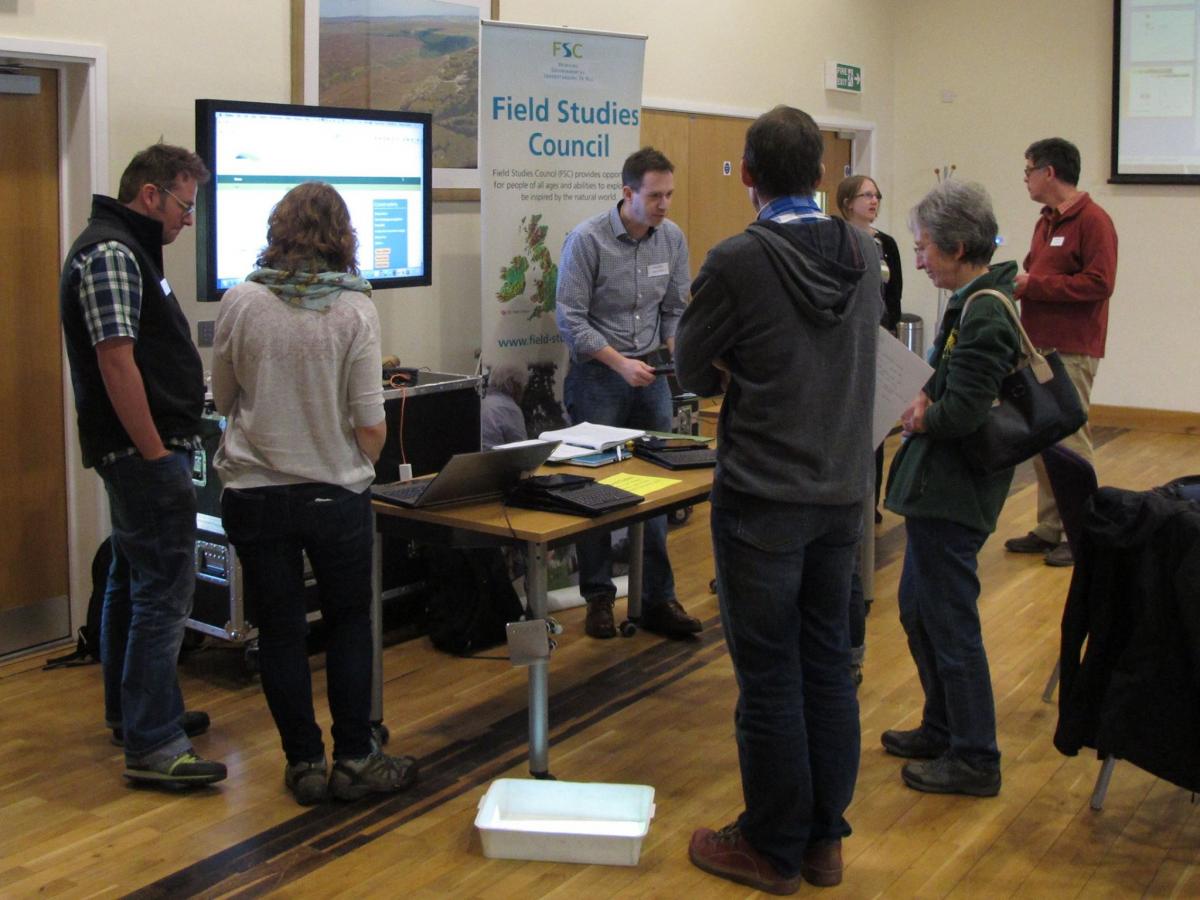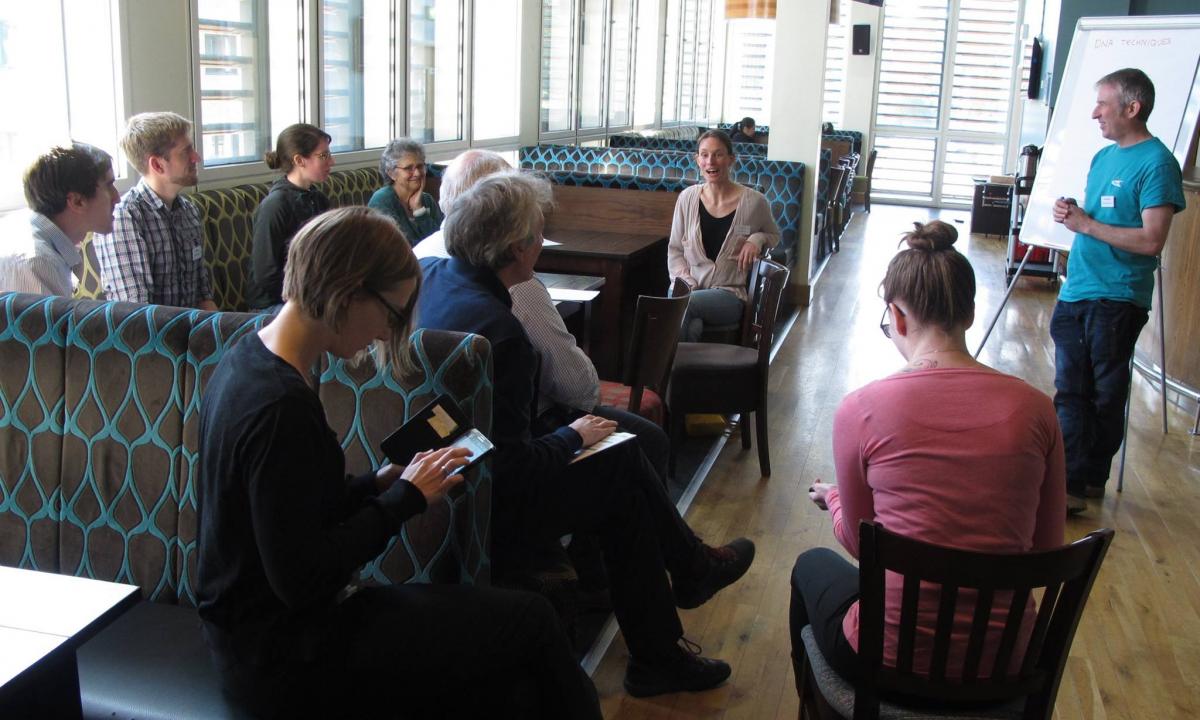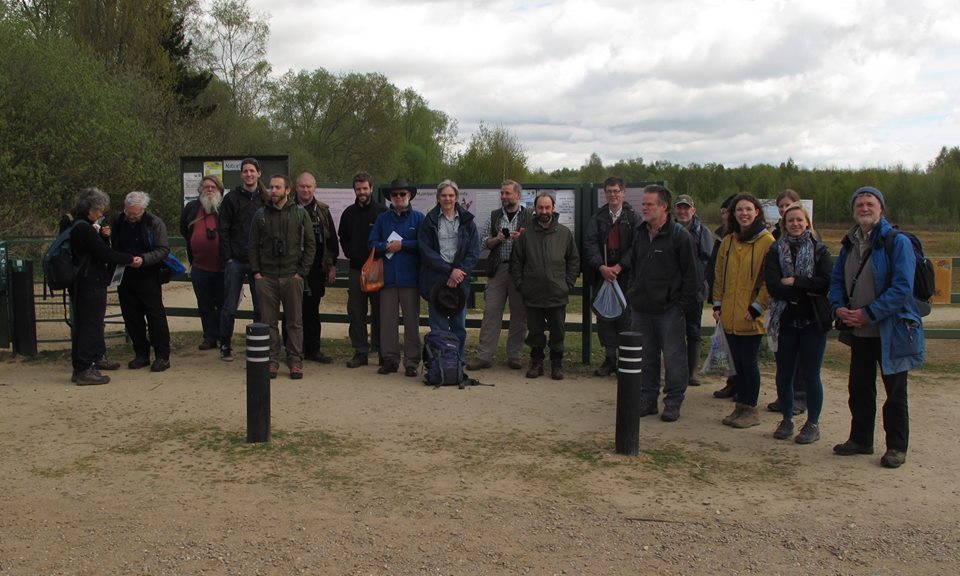Molecular tools for curiosity-led natural history
Last week it was my great pleasure to attend the 2105 conference of the National Forum for Biological Recording which was jointly organised with the British Ecological Society's Macroecology Special Interest Group (chiefly by Paula Lightfoot and Tom Webb). Thursday and Friday included a packed programme of presentations, technical demonstrations, posters and discussion workshops. There was so much of interest it was hard to know where to look at times. This was followed on Saturday by a field trip to the wonderful Thorne and Hatfield Moors (organised by Tim Graham and guided by Steve Hiner).
 There were many highlights for me including some fascinating presentations from Local Environmental Record Centre folk - among them my former colleagues from the North West, Ben Deed, Phil Smith and Teresa Frost - which really demonstrated the value that LERCs add to biological recording in the UK beyond the everyday record management and report production for which they are probably best known. Some of the 'quickfire' presentations were also very memorable including one on the production of a mammal atlas for Derbyshire from Debbie Alston.
There were many highlights for me including some fascinating presentations from Local Environmental Record Centre folk - among them my former colleagues from the North West, Ben Deed, Phil Smith and Teresa Frost - which really demonstrated the value that LERCs add to biological recording in the UK beyond the everyday record management and report production for which they are probably best known. Some of the 'quickfire' presentations were also very memorable including one on the production of a mammal atlas for Derbyshire from Debbie Alston.
The theme of the conference, 'a question of ecology - answers from biological recording', together with the joint organisation and promotion of NFBR and BES Macroecology SIG, generated a diverse audience and content which, I felt, successfully bridged what can be a very real gap between the academic and natural history ends of the biological recording world. Kat Bruce facilitated a workshop, gave a quickfire presentation and contributed a poster on the theme of utilising a molecular approach to biodiversity monitoring and biological recording: a subject that I find very exciting and blogged about back in August 2013.
 The title of Kat's poster - 'A molecular toolset for biological recording' - is tantalising. The way I read it, there is an implicit suggestion that molecular techniques are something for me - a humble natural historian! The image here is lifted straight from Kat's poster (see a PDF of the full poster here). It nicely sums up the current state of play with the rapidly evolving suite of molecular techniques for identifying biota and their areas of application.
The title of Kat's poster - 'A molecular toolset for biological recording' - is tantalising. The way I read it, there is an implicit suggestion that molecular techniques are something for me - a humble natural historian! The image here is lifted straight from Kat's poster (see a PDF of the full poster here). It nicely sums up the current state of play with the rapidly evolving suite of molecular techniques for identifying biota and their areas of application.
We are all too aware that the difficulty of biological identification inhibits effective monitoring of biodiversity on earth, with potentially disastrous consequences. So advances made in these techniques which are, for the first time, making effective monitoring of traditionally very intractable groups - like soil biota - a real possibility are very welcome. Kat pointed out that molecular techniques, in isolation, cannot provide all the answers and that we need to join them up with established taxonomic techniques since the latter provide a framework within which to make sense of all the information generated by the former.
Since the problem of monitoring the earth's biodiversity is becoming so acute, we should expect the most rapid development of molecular techniques, and the infrastructures within which they operate, to result in a more complete suite of biodiversity indicators. Biological recorders will, no doubt, have many opportunities to play their part in new biodiversity monitoring and surveillance programmes which utilise these techniques, but what of the possibility of using them in their own work and studies? More than once during the conference I heard the word 'curiosity' being used.
Whilst I, like many biological recorders, want to do my bit for the big collaborative efforts to monitor biodiversity, what actually gets me out of bed in the morning is my own curiosity.
So what I can't help getting excited about is the possibility of these techniques becoming available to me - as I like to say - 'on my kitchen table'. It feels audacious to dare believe that it might be so - it's so much like science fiction. But smart phones, GPS, Google Earth and so much else would also have seemed like science fiction 30 years ago. Now we're learning to expect technology to get cheaper and smaller year on year - we all subscribe to Moore's law. But will this technology conform to the same pattern? Is there anything fundamentally different about it - e.g. the problem of preparing samples for molecular analysis - which exempts it from Moore's law? I put this question to Kat at her workshop. She was unequivocal - it is coming to your kitchen table, and it's much closer than you think.
 Biological recorders or natural historians - whatever you like to call them - are fundamentally curious about nature. Biological identification - putting names to organisms - is an essential first step in satisfying that curiosity. By putting a name to something, you gain access to what is already known about it and from there you can gain new insights and add to that knowledge. After that first step there are potentially many more, infinitely more rewarding. Ray, White, Darwin, Wallace and the rest were curiosity-driven. Taxonomy and biological recording were, for them, just the first steps; a means for providing the context within which they could begin to satisfy their curiosity about the natural world.
Biological recorders or natural historians - whatever you like to call them - are fundamentally curious about nature. Biological identification - putting names to organisms - is an essential first step in satisfying that curiosity. By putting a name to something, you gain access to what is already known about it and from there you can gain new insights and add to that knowledge. After that first step there are potentially many more, infinitely more rewarding. Ray, White, Darwin, Wallace and the rest were curiosity-driven. Taxonomy and biological recording were, for them, just the first steps; a means for providing the context within which they could begin to satisfy their curiosity about the natural world.
When I reviewed the drivers of biodiversity change in the desk research phase of Tomorrow's Biodiversity, I found that those modeling and predicting biodiversity change were hampered because the effects of drivers are mediated through ecological processes and relationships that are not well-enough understood. As molecular techniques start to help us overcome some of the barriers to biological identification, we will all have more time and resources to spend on unraveling those processes and relationships and it's an area where natural historians can make a very real contribution. Molecular techniques will provide additional routes through the barrier of biological identification, giving our curiosity greater access to infinitely richer pastures beyond!
 Last Saturday my curiosity got me out of bed again and I joined an impressive crowd of curiosity-led folk to travel the 30 miles from Sheffield to Hatfield Moor where we spent the day biological recording and looking at the things we love in the field. Among other things, we watched a spider hunting wasp (Anoplius viaticus) catch a spider (Trochosa terricola) and a male wolf spider displaying to a female (Pardosa saltans). What made these things memorable were the interactions and behaviour we observed and what, in turn, made those observations meaningful was our ability to identify the organisms involved.
Last Saturday my curiosity got me out of bed again and I joined an impressive crowd of curiosity-led folk to travel the 30 miles from Sheffield to Hatfield Moor where we spent the day biological recording and looking at the things we love in the field. Among other things, we watched a spider hunting wasp (Anoplius viaticus) catch a spider (Trochosa terricola) and a male wolf spider displaying to a female (Pardosa saltans). What made these things memorable were the interactions and behaviour we observed and what, in turn, made those observations meaningful was our ability to identify the organisms involved.
As I wandered around the site my curiosity was also piqued by a number of stretch spiders (Tetragnatha sp.) that I swept from birch but couldn't identify with certainty to species level, either in the field or back at home, because they were immature. Perhaps one day, with the aid of molecular techniques, identifying spiders such as these will be tractable. Who knows, perhaps I may even be able to identify the remains of the invertebrates in their guts! Then the picture of a place like Hatfield, with its myriad organisms and their interactions, will resolve itself with greater clarity to me. It's all food for curious minds.
- rich burkmar's blog
- Log in or register to post comments



